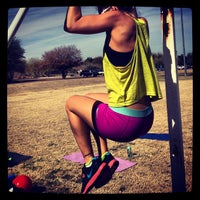

Together, we bumbled through our first big walls, in Zion. With 2x4s and plywood, we converted a 1993 Toyota pickup into an extremely low-ceilinged mobile home. Three days later, Becca walked in with a winter wind licking at her heels and smelling like the promise of snow. “Can I come see you?” I stammered my approval. Meanwhile, I spent six months in Australia, graduated, and moved to Arizona. Becca left Colorado, took a job in Alaska, and moved in with a boyfriend in Oregon. One day we were together the next, thousands of miles separated us. There were no muttered apologies or worn-out excuses. Neither of us remember ending our relationship. She was older and, after graduating, left Seattle to chase snow and a career in science. It had started years earlier as a simple summer fling. I let it hang there like an open-ended question: what was I doing?īecca and I were two people headed in different directions, or at least that was what we told ourselves after a chance run-in. I tossed the noose over the rafters, letting it sway until it went still in the stagnant air of the garage.

In my hands sat an empty circle backed up by a powerful knot. I twisted the rope into its first “8,” and then followed it back through.

My hands worked it into various knots until they came to the figure 8. One evening while sorting climbing gear, I pulled out a slender cord, still wet from alpine snowmelt. I had fallen in love with something that could not love me back. I expected to find happiness on summits, but instead discovered the obvious-by nature, mountaintops are lonely. When friends tried to fix me up with a work acquaintance, I sat swirling my beer and let the conversation flow past like water around a cold river stone. That razor-edged clarity I felt soloing eluded me in daily life. I was getting stronger, but my ability to connect to anything other than my own small world had withered. It almost always felt like I was in the perfect place and moment.Ĭlimbing was no longer about having fun-it was about fulfilling potential. Once I laced up and twisted my swollen knuckles into finger cracks, I was never afraid. When I arrived, chest heaving from running the approach, the anxiety eased and my breath settled into a calm rhythm. Whether it was long enchainments on Washington’s wilderness peaks or a single, demanding pitch that I had rehearsed mentally a hundred times, these solos began as sudden, impetuous flare-ups that absorbed my thoughts until I finally rushed toward the mountains. It wasn’t that my solo projects became riskier-it was that climbing solo had become the norm. True, it was getting harder to tell the difference. My non-climbing friends dubbed them “freak-outs.”

I would return two or three days later limping and sunburned. I stacked training sessions atop classes at the University of Washington and part-time writing jobs then, leaving only a cryptic note on the refrigerator door describing my whereabouts to my roommates, I’d disappear. If I could streamline climbing this way, I reasoned, why not my entire life? It was a dangerous direction, one that complemented my strengths-a genetically encoded work ethic and confidence in my ability-and pandered to my weakness-a lifelong shyness. By eliminating clutter, I made the system exponentially more efficient.
#Desert breeze park death full#
Climbing alone, I could speed through a full day’s pitches in a few hours I could pack a month’s worth into a single day. Partners proved too cumbersome-they showed up late or not at all. I’d already soloed for two years, but those ropeless ascents were spur of the moment. It wasn’t a death wish or an adrenaline craving that pushed me into the mountains. Sometime around my 22nd birthday, I quit tying in. Between two climbers, a figure 8 makes the vital and magnificent promise, “If you go, I go, too.” “The Black Dog” was later anthologized in Vantage Point: 50 Years of the Best Climbing Stories Ever Told, published in 2018 by Falcon Guides, an imprint of Rowman & Littlefield Books.įitz Cahall is a climber, writer, and podcast host of Dirtbag Diaries and Climbing Gold.įunctional as it is strong, the figure 8 is the first and most important knot a climber learns-it attaches him to rope, gear, and partner.
#Desert breeze park death series#
It was part of a 5-part essay series called “The Black Dog: Five First-Person Riffs on the Dark Side of the Climber Mind,” which tackled topics of depression, fear, and death in the climbing community. This story originally appeared with the title “Slender Cord” in Climbing No. Heading out the door? Read this article on the new Outside+ app available now on iOS devices for members!


 0 kommentar(er)
0 kommentar(er)
